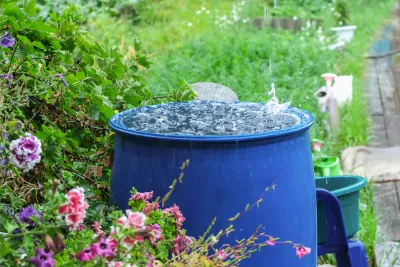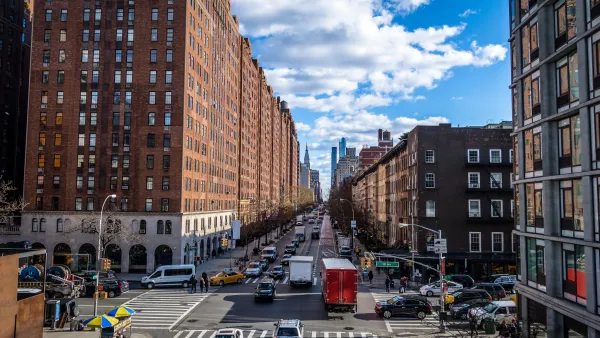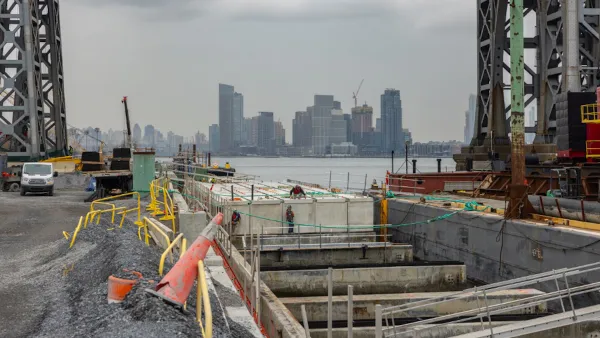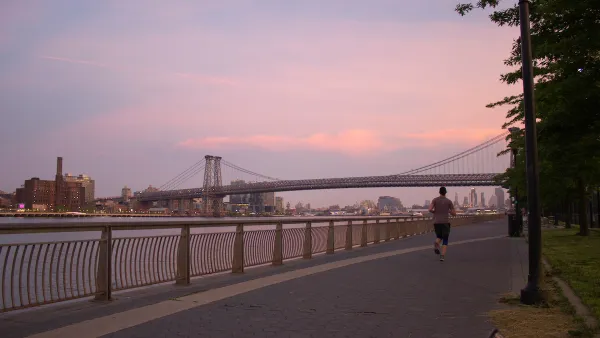Cities like New York and Los Angeles are moving to build green infrastructure as the need for spongier urban spaces becomes more apparent.

Writing in Wired, Matt Simon warns that New York City needs to adapt to protect its citizens and infrastructure from future flooding like the city experienced during Hurricane Ian and recent rains.
As Simon explains, “On a warming planet, it’ll rain more and individual storms will get more intense. This pain will be especially acute in urban areas, which are built on stormwater infrastructure designed to handle the rainfall of yesteryear.” Now, old infrastructure can’t keep up. “Ancient wastewater systems are now tasked with getting rid of ever-bigger inundations.”
Meanwhile, hard, impermeable surfaces like concrete and asphalt effectively seal cities, leaving few places where water can drain into the ground. “Better sewer systems will be indispensable, sure, but planners are also fundamentally reimagining urban areas as “sponge cities” designed to mitigate flooding by absorbing water.”
Today, cities like New York and Los Angeles are working to reverse the problem by building green infrastructure such as rain gardens, bioswales, blue belts, and permeable pavement. In places like Los Angeles, this much-needed water will also help replenish underground aquifers.
According to Simon, “Green spaces don’t just mitigate flooding. They beautify the urban landscape and improve residents’ mental health. They filter out microplastics and other pollutants, keeping them from reaching sensitive water bodies like rivers. And when the weather is hot, they cool neighborhoods, because plants ‘sweat.’”
FULL STORY: New York Needs to Get Spongier—or Get Used to More Floods

National Parks Layoffs Will Cause Communities to Lose Billions
Thousands of essential park workers were laid off this week, just before the busy spring break season.

Retro-silient?: America’s First “Eco-burb,” The Woodlands Turns 50
A master-planned community north of Houston offers lessons on green infrastructure and resilient design, but falls short of its founder’s lofty affordability and walkability goals.

Delivering for America Plan Will Downgrade Mail Service in at Least 49.5 Percent of Zip Codes
Republican and Democrat lawmakers criticize the plan for its disproportionate negative impact on rural communities.

Test News Post 1
This is a summary

Test News Headline 46
Test for the image on the front page.

Balancing Bombs and Butterflies: How the National Guard Protects a Rare Species
The National Guard at Fort Indiantown Gap uses GIS technology and land management strategies to balance military training with conservation efforts, ensuring the survival of the rare eastern regal fritillary butterfly.
Urban Design for Planners 1: Software Tools
This six-course series explores essential urban design concepts using open source software and equips planners with the tools they need to participate fully in the urban design process.
Planning for Universal Design
Learn the tools for implementing Universal Design in planning regulations.
EMC Planning Group, Inc.
Planetizen
Planetizen
Mpact (formerly Rail~Volution)
Great Falls Development Authority, Inc.
HUDs Office of Policy Development and Research
NYU Wagner Graduate School of Public Service





























